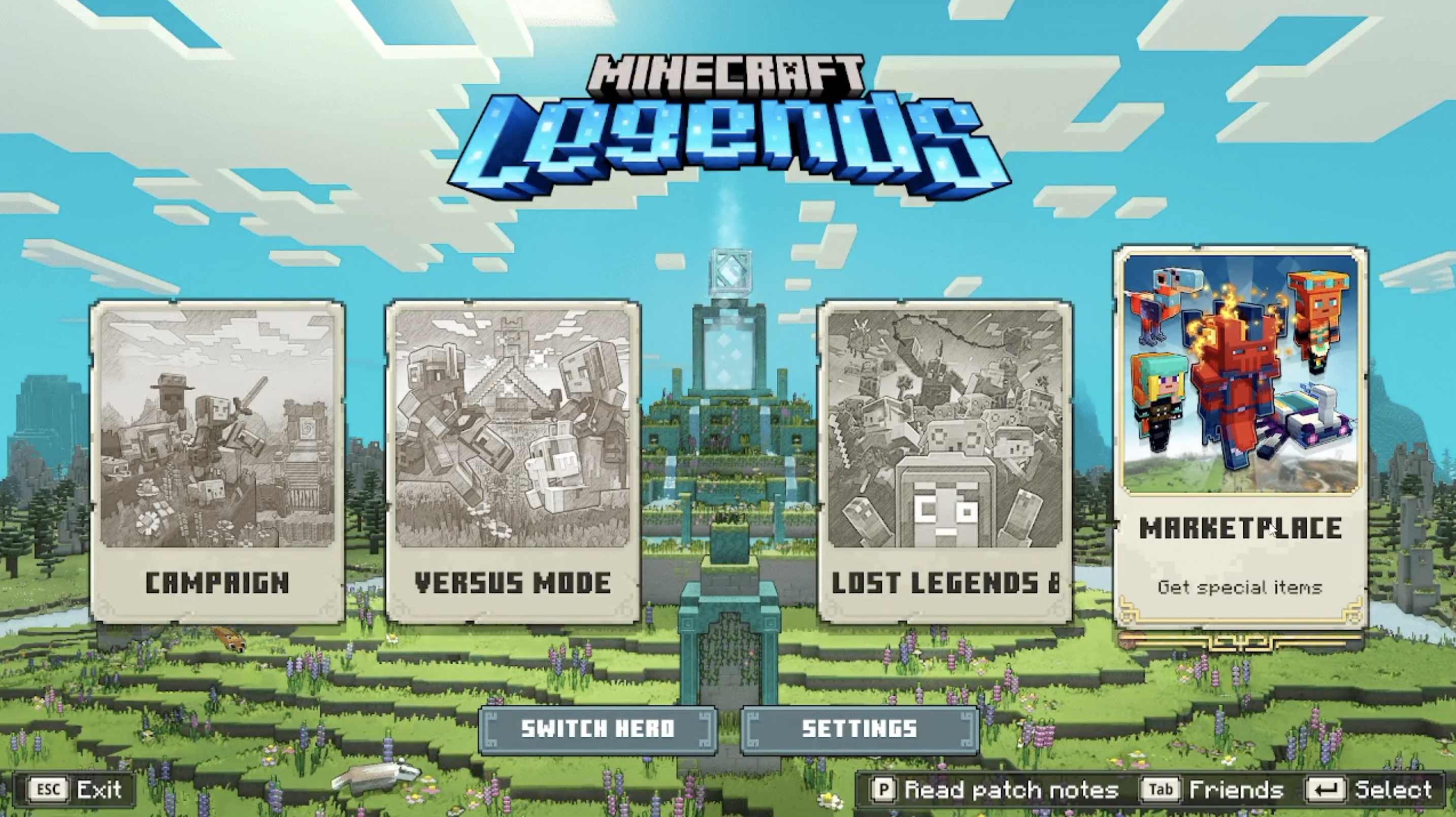What is Minecraft Legends?
Minecraft Legends is an RTS genre game in the Minecraft franchise, built through a collaboration between BBI, Mojang, and Microsoft. It is available on PC and various consoles, including Nintendo Switch, PlayStation 4, PlayStation 5, Xbox One, and Xbox Series X/S.

Overview
Renew Lost Legends screen in Marketplace
Lost Legends marketplace is where users can download mini-games in Minecraft Legends. When users complete a stage, they receive valuable rewards. The old Lost Legends marketplace had limitations in showcasing multiple items. Given our monthly game releases, I was tasked with designing a new layout that allows users to enjoy any Lost Legends game at their convenience. My goal was to provide a solution for displaying multiple items on the screen and ensuring that Lost Legends stands out among the three menu tabs. Additionally, I gave careful thought to how to enhance the player's enjoyment of the game without requiring them to navigate through multiple steps.
In this project, I collaborate with the UI Artist and engineers. I created low to high-fidelity wireframes based on the existing UI components and some missing parts I requested from the UI artist.
Role
UI/UX Design
Tools
Figma
Bedrock/ React
Perforce
Problems
- There are three tabs on one page, and Lost Legends is one of them. If we use the same layout as the other tabs, Lost Legend mini-game will not stand out.
- Currently, only one game is displayed.
- There is no function to view multiple games.
- There are too many steps before players can start playing the game.
Solutions
- Create a new layout for Lost Legends and ensure that this layout stands out among other tabs.
- Utilize a "scrollview" component to display a list of games, allowing users to easily view all available Lost Legends games.
-
Provide notifications for recently released games.
- Employ sub-headers to differentiate between past Lost Legend games and those released this month.
- Organize the list by month to enhance user navigation.
- Clearly distinguish between downloaded games and those that haven't been downloaded yet. (on the thumbnail and content area)
- Lastly, provide insights into user flow.
High Fidelity Prototype
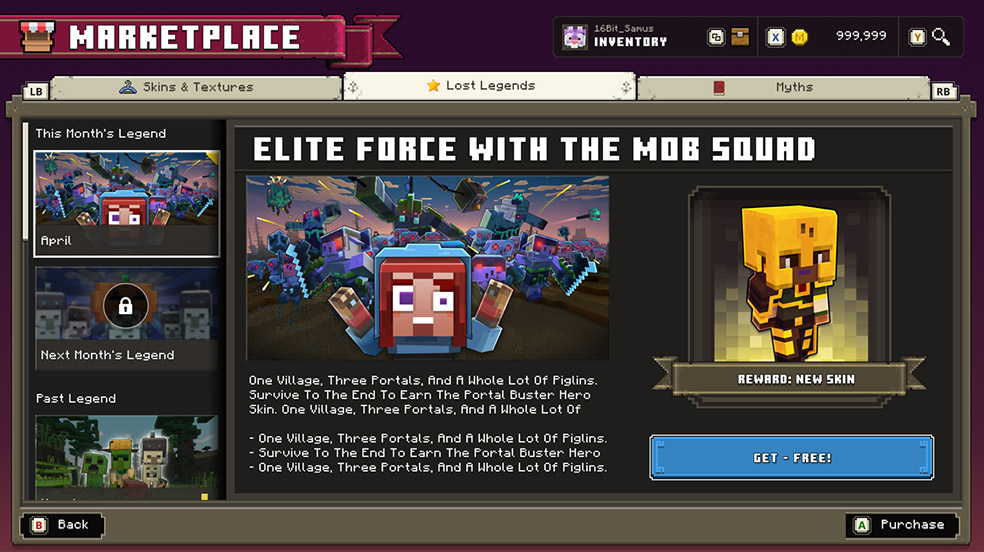
Challenges
-
Onboarding
This was my first task after joining the company. I had to play Minecraft Legends to understand its theme. Additionally, I downloaded and played other RTS genre games.
-
Understanding the guidelines and components
The game was built using multiple components, and I had to brainstorm ideas while keeping in mind how to utilize these components. Given the limited space available, it wasn't easy to fit all the content while adhering to the guidelines (Mojang uses a 4pt grid system).
-
Implement the prototype into the Bedrock
I have experience with React, and fortunately, the Bedrock engine works similarly. I had to learn and adapt to the coding style and assist engineers to integrate the prototype into the game using the Bedrock engine.
Research
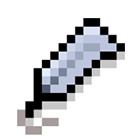
First, my research focused on the competition space to understand how other games are addressing marketplace layouts. I downloaded Minecraft-related games, RTS games, and used searches and the Game UI Database to explore different types of layouts.
New User Flow

Low Fidelity Wireframe

[List Area] Design checklist
- Divide the list into two groups: 'New Challenges' and 'Past Challenges', to help players instantly identify the newest challenges.
- The space for writing a 'Lost Legends' title is limited, and we also need to consider localization. Therefore, I use a 'month' to indicate that we are releasing a new game every month. This way, players will be informed that they can expect a new 'Lost Legends' each month.
- Display a lock icon alongside the thumbnail to indicate upcoming challenges, encouraging players to return to the game.
- Distinguish between downloaded games and non-downloaded ones.
- Consult with engineers to determine the most effective way to present the information.
[Content Area] Design check list
- Ensure that the download button stands out and isn't hidden at the bottom.
- Clearly display the rewards to entice and encourage players to enjoy the game.
- Ensure that the content is clearly displayed on the screen so that players don't miss out on any important information.
- Talk with engineers to determine the most effective way to present the information.
Breakdown Components
As a UX designer, my primary responsibility is to provide comprehensive guidelines for both the engineering and art teams and ensure alignment with all involved teams, fostering a cohesive approach to achieving our design goals.
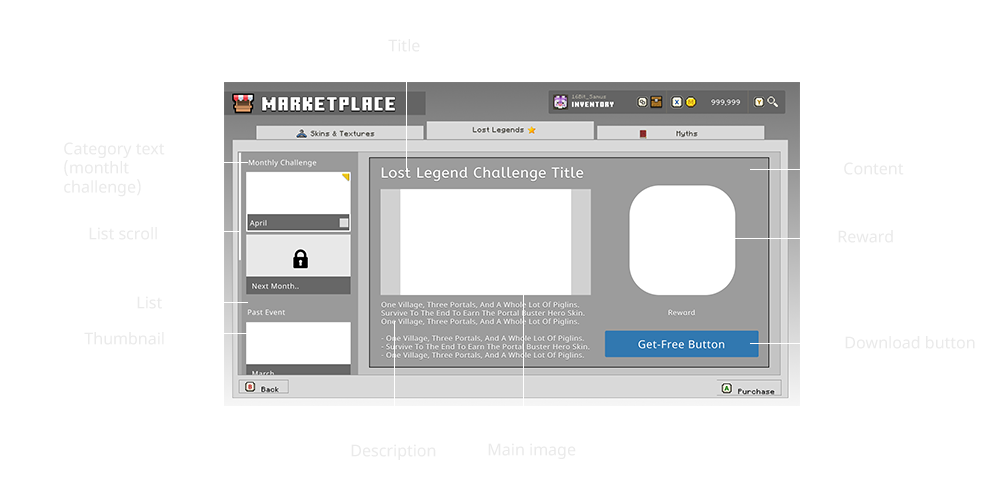
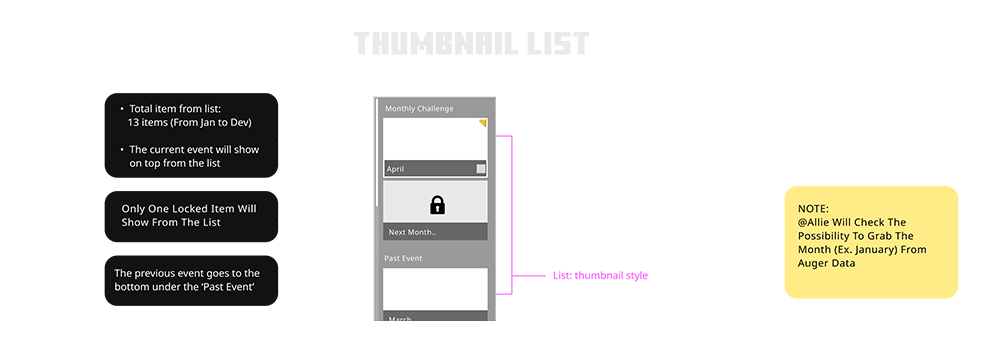
** It's easy to work with engineers using wireframes with descriptions.**
Grid
Mojang utilize the 4-Grid System to ensure pixel-perfect spacing and font size consistency while aligning with team and engineers.
Typeface
To maintain consistent design, it's essential to ensure that the font type, size, and color theme align with the current design.

Icons
Bedrock (React) Engine
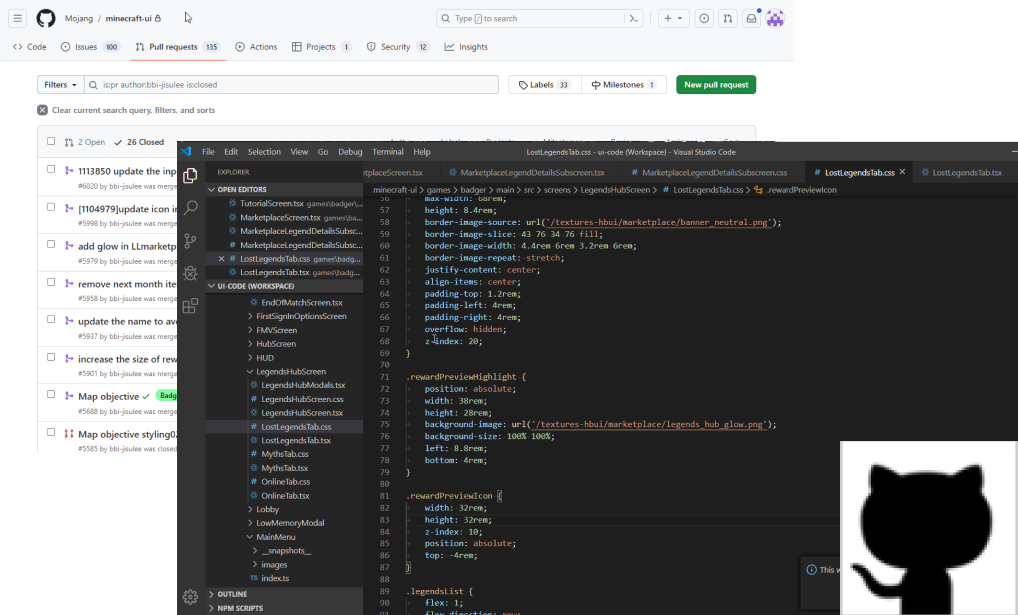
I contributed by writing code using the Bedrock/React
library. This involved implementing prototypes, updating
CSS, adding strings to the JSON file, and utilizing Git,
the version control system, to collaborate with engineers.
I worked with Gameface, which communicates with Bedrock. I
shared the UI system with Minecraft and collaborated with
Mojang's UI programmers.
QA Testing
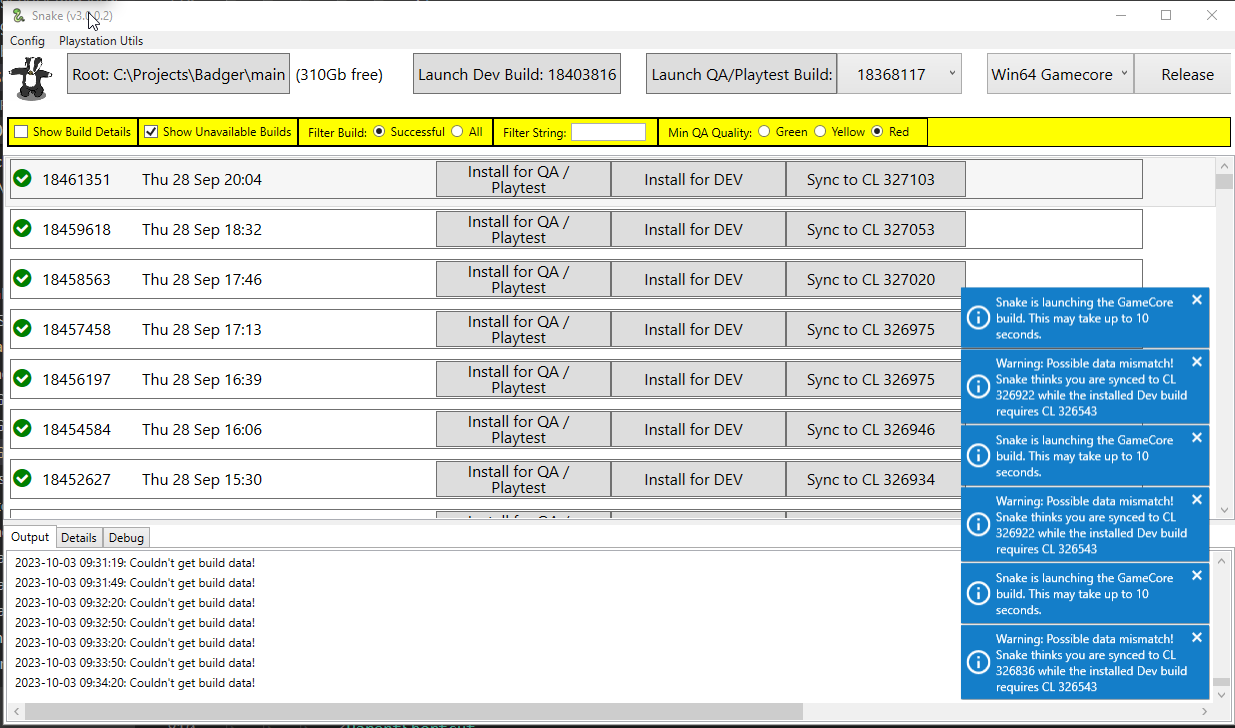
After finishing the implementation phase with our talented engineers, I make sure to review the page for any potential omissions. Additionally, I reach out to our QA team for their valuable input and review.
Final Work
Before & After (Slide the arrow to the left or right)
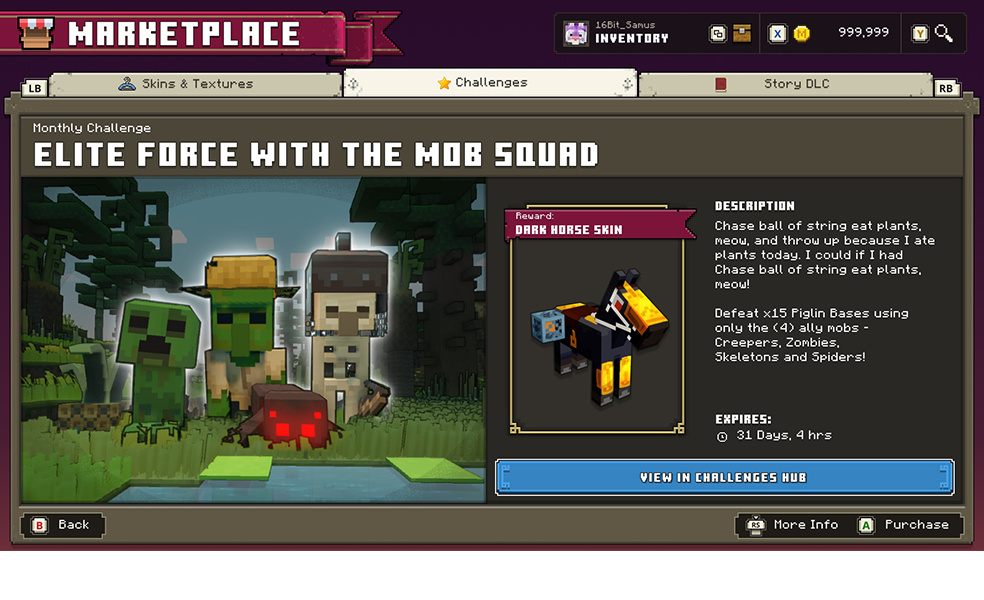
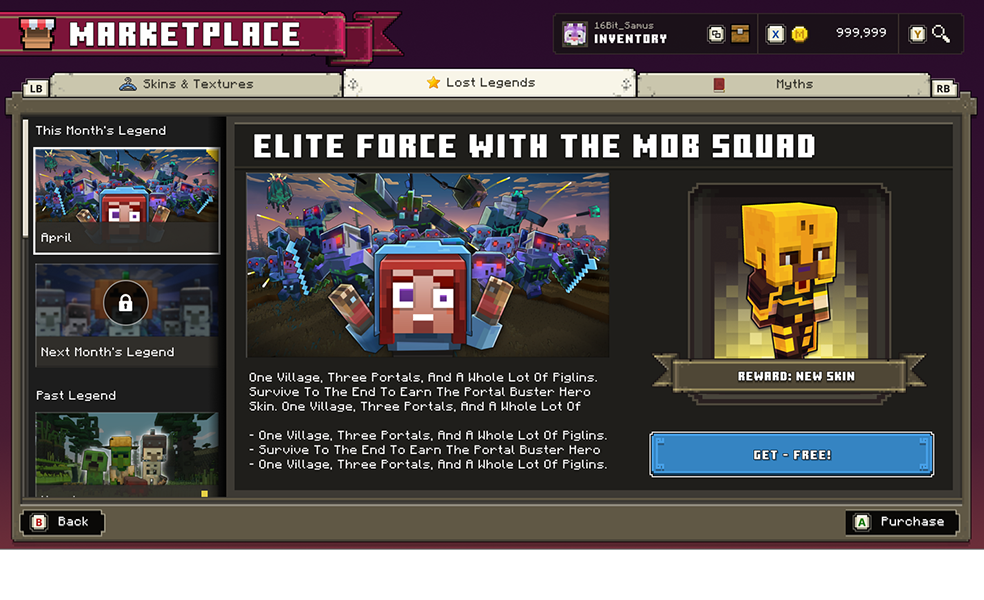
User Engagement
Minecraft Legends sales amounted to almost $1 million, with almost 40,000 copies sold during the same time period. We observed a significant number of users consistently enjoying Lost Legends. However, it's interesting to note that while the company initially encouraged users to collaborate and tackle challenges together, it turns out that many users prefer playing solo.


What is Next?
What We Can Try to Increase Lost Legends User Engagement?
As UX designers, consider this user behavior and adapt our approach to enhance the Lost Legends gaming experience.
- Solo Play Enhancement: Recognizing that many users prefer to play alone, we should focus on optimizing the solo game-play experience.
- User Feedback Integration: Continuously gather feedback from our player community to understand their preferences and pain points. This data will help us make informed design decisions and prioritize features that align with user needs.
- Community Building: Foster a sense of community among players, even if they primarily play solo. This can be achieved through in-game forums, events, or leader boards, creating a shared experience without mandatory collaboration.
- AI: Lately, I've been very interested in how AI can solve classic UX challenges. I was reading about how survey responses can change depending on where you ask the question, which can skew the data. It made me think about the projects I've worked on. We have a huge, untapped resource: player chat logs. Instead of just relying on surveys, we could use AI to analyze those conversations in real-time. The AI could automatically tag comments for sentiment—like frustration or excitement—and group them by topic. This would give us a much more authentic view of the player experience, helping us pinpoint exactly what to fix or what to build next.
